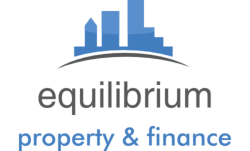New evidence
suggests that rental growth in many parts the country is slowing. Although landlords
continue to wield control of the rental market, according to the new weekly
asking rents data series released last week by SQM Research, this control is
weaning.
Data from the
index reveals that on a national level, owners of investment properties have
steadily increased their rental asking prices in some capital cities over the
past 12 months, however this increase has been slower in comparison to rises
experienced in 2010 and early 2011- with the capital city average asking prices
increasing 0.1% year-on-year for houses and 2.1% for units, compared to the
12.3% for houses and 10.3% for units over the past three years.
SQM
Research’s new index – The Weekly Rents Index, which gages the sentiment of
landlords by recording their rental asking prices on a weekly basis, has
revealed (As seen in the chart above) that rental yields in Australia have lost
pace in recent months. This is most likely attributed to the latest recovery in
the housing market, prompting renters to exit the rental market in favour of
purchasing property – thus causing vacancy rates to loosen in many localities.
Although the
effects of this have to date been somewhat modest, it is the expectation of SQM
Research that as the state of housing market continues to improve, the
ramifications of this on the rental market will become increasingly obvious.
For example
Canberra’s asking rents have appeared to decline over the past 12 months on all
fronts, whilst Perth has experienced sharp increases over the same period. This
is somewhat expected of Perth as the commodities boom continues to encourage
employees to migrate temporarily in this part of the country. With these
individuals preferring to rent rather than purchase as their time spend in the
area is momentary, vacancy rates have been pushed down significantly –
currently standing at 0.8% for Perth – a figure well below what SQM Research
considers to be equilibrium (3%).
As a result
of this, it is easy to see why Perth has recorded rises of 7.9% for houses and
11.0% for units over the past 12 months.
Darwin
although highly seasonal, tells a similar story, recently recording vacancy
rates as low as 0.4% (July 2012) and currently sitting at 1.4%. It becomes
evident how closely linked low vacancy rates are to rental growth, with Darwin
posting a 19.8% yearly increase in asking rents for houses and a 14.4% yearly
increase in asking rents for units.
Louis
Christopher, Managing Director of SQM Research says “Our new rents index provides a contrasting insight into the Australian
rental market. On one hand there is Perth and Darwin recording very solid
rental increases right across the localities of both cities. And then on
another, we note what seems to be a slowdown taking place in the Sydney rental
market. And then there is Melbourne where within that city there are clear
pockets of oversupply of rental property and pockets of undersupply. This illustrate
by far that there are markets within markets. Going forward, local conditions
are set to dominate rental conditions for 2013 with no real large influence
from the macro-economic tides other than a slow to moderate movements of
renters tuning themselves into first home buyers.”
